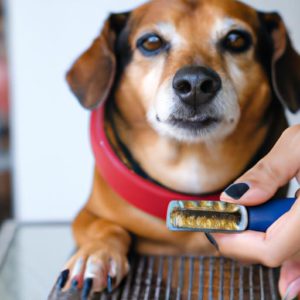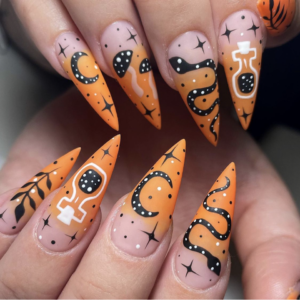Dogs are beloved companions, often considered part of the family. As responsible pet owners, we have a duty to ensure our furry friends are well taken care of, which includes maintaining their nails. Unfortunately, accidents can happen, and a dog’s nail may start bleeding, causing discomfort and pain. In this article, we will discuss the reasons behind bleeding dog nails, signs to look out for, immediate first-aid measures, preventive practices, and when it’s necessary to seek professional veterinary assistance.
Understanding the Causes of Bleeding Dog Nails
One of the primary causes of bleeding dog nails is over-trimming. Regular nail trims are crucial to maintaining your dog’s overall health and preventing excessive nail length. However, if you trim the nails too short, bleeding may occur. Additionally, accidental injuries can also lead to bleeding nails in dogs. For instance, a dog might snag their nail on a sharp or hard object, resulting in tearing or breaking. Furthermore, underlying medical conditions may weaken the nails, making them brittle and prone to bleeding. These conditions can include fungal or bacterial infections.
Being aware of the potential causes of bleeding dog nails allows us to take preventive measures. Over-trimming can be avoided by employing the correct technique and using appropriate tools. Accidents are harder to anticipate, but keeping your dog away from sharp or hard objects and ensuring a safe environment is a step in the right direction. Regular visits to the veterinarian can also help identify any underlying medical conditions that require attention.
Identifying Signs of a Bleeding Dog Nail
Recognizing the signs of a bleeding dog nail is crucial in addressing the issue promptly. The most obvious sign is visible bleeding, ranging from a few drops to a constant stream of blood. Additionally, a dog may start limping or favoring the affected paw due to pain and discomfort. Excessive licking or biting of the nail area can also indicate a bleeding nail. Dogs often lick or bite the source of pain or discomfort, and a bleeding nail can trigger this behavior.
Immediate First Aid for a Bleeding Dog Nail
When your dog’s nail is bleeding, swift action is essential to prevent further injury and potential infection. The first step is to apply pressure to the nail to stop the bleeding. Use a clean cloth or towel, and apply pressure for at least five minutes. If the bleeding persists, styptic powder or cornstarch can be helpful. These products work by constricting the blood vessels and halting the bleeding. Additionally, elevating the affected paw can decrease blood flow to the area, reducing bleeding.
It’s important to note that if the bleeding is severe or doesn’t stop, immediate veterinary assistance should be sought. A veterinarian can provide the appropriate treatment and medication to stop the bleeding and prevent further complications. In some cases, a dog may require stitches or other medical procedures to effectively treat the injury.
By understanding the causes, recognizing the signs, and knowing how to provide immediate first aid, you can effectively address a bleeding nail in your beloved furry friend. Remember, prioritizing their well-being and seeking professional assistance when necessary ensures that they remain happy and healthy for years to come.







